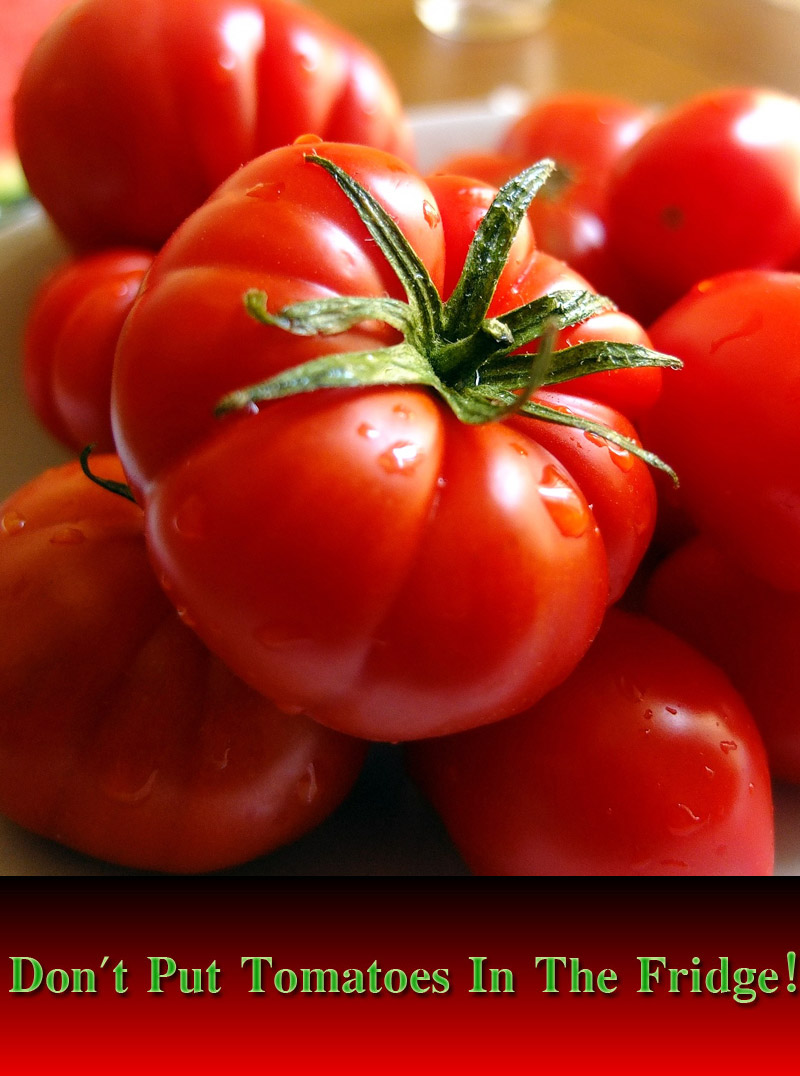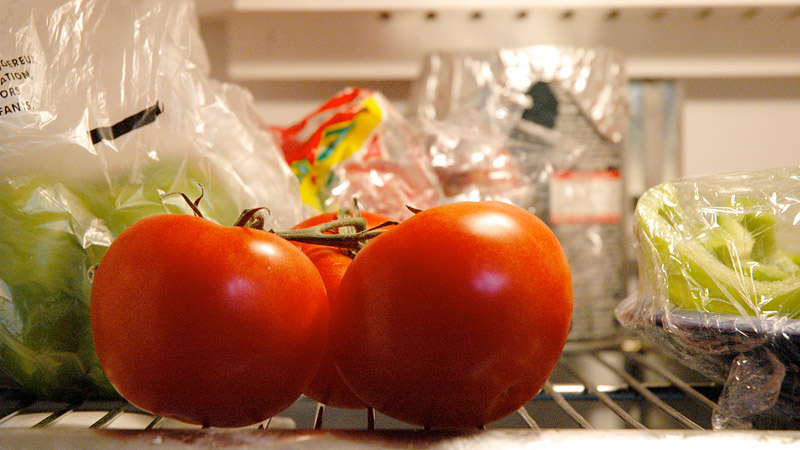
Many consumers already know that tomatoes picked fresh off the vine pack far more flavor than the bright red orbs chilling at the grocery store. But scientists didn’t fully understand why putting tomatoes in the fridge could reduce some of their rich flavor.
Now researchers at the University of Florida say they found the answer by studying the tomatoes’ genes. The new research, published Monday, explains why the loss of flavor happens at the molecular level. The answer calls into question the entire system of handling tomatoes from when they are picked and shipped to when they are purchased and brought home.
Researchers found that chilling tomatoes at temperatures below 12 degrees Celsius, or 53.6 degrees Fahrenheit, hampers the enzymes in the fruit. The study, published Monday in the journal Proceedings of the National Academy of Sciences, found that chilled tomatoes’ enzymes are less effective at combining volatile compounds, which are crucial for imparting the tomato’s flavor.
This leads to tomatoes that are relatively fresh and physically appealing — yet far less flavorful than their farm-picked peers.

“Commercial tomatoes are widely perceived by consumers as lacking flavor. A major part of that problem is a post-harvest handling system that chills fruits,” the study’s authors, led by Florida horticultural sciences professor Harry Klee, wrote in the study.
“Low-temperature storage is widely used to slow ripening and reduce decay,” they wrote, adding that for tomatoes, this results in “reduced flavor quality.”
The tomato’s flavor is determined by the interactions of sugars, acids and a set of 15 to 20 volatile compounds, the study found. Klee and the other researchers found that cold storage does not significantly affect the tomatoes’ sugars and acids. Instead, all the flavor-zapping action happens with the fruits’ volatile compounds.
For their research, the team used tomatoes grown in a greenhouse on the University of Florida campus in Gainesville and divided the full, red ripe fruits into three groups.
In the first group, tomatoes were stored at 5 degrees Celsius, or 41 degrees Fahrenheit, with 92 percent relative humidity for seven days, then transferred to 20 degrees Celsius, or 68 degrees Fahrenheit, for a one-day recovery. In the second group, tomatoes were held at 5 degrees Celsius for eight days without recovery at ambient temperature.
In the third group, tomatoes were picked and tested one day later, without chilling.
Researchers found that seven days of cold exposure reduced the tomatoes’ levels of volatile compounds by up to 65 percent. The brief recovery periods after chilling failed to restore the fruits’ volatiles to normal levels, according to the study.
A panel of 76 consumers also ranked their liking of the chilled and unchilled tomatoes. The taste-testers judged fruits that were chilled for seven days, then stored at 20 degrees Celsius, as much less flavorful than fruits that were picked a day earlier.
Klee said the researchers ultimately aim to “produce a better-tasting tomato” by identifying the genes that control the synthesis of flavor-related volatile compounds, according to Klee’s research page on the University’s website.





Leave a Reply